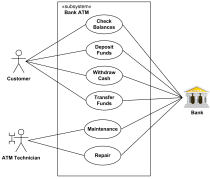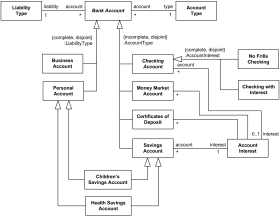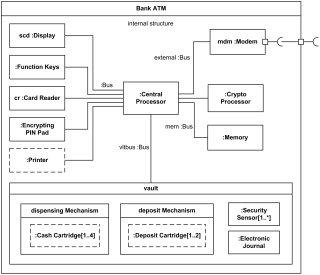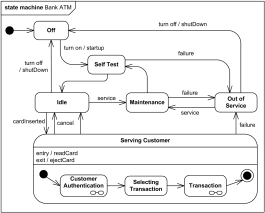Bank ATM
UML Diagram Examples
Here we provide several UML diagrams of different types, all part of a Bank ATM model.
Purpose: Describe use cases that an automated teller machine (ATM) or the automatic banking machine (ABM) provides to the bank customers.
Summary: Customer uses a bank ATM to check balances of his/her bank accounts, deposit funds, withdraw cash and/or transfer funds (use cases). ATM Technician provides maintenance and repairs to the ATM.
Purpose: Domain model describing common types of bank accounts.
Summary: This example shows several subtypes of Bank Account using UML generalization sets. Bank accounts could be grouped into UML generalization sets based on different criteria. Example diagram shows bank accounts topology with two orthogonal dimensions and with corresponding power types Liability Type and Account Type.
Purpose: Show internal structure of a bank ATM and relationships between different parts of the ATM.
Summary: Bank ATM is typically made up of several devices such as central processor unit (CPU), cryptoprocessor, memory, customer display, function key buttons (usually located near the display), magnetic and/or smartchip card reader, encrypting PIN Pad, customer receipt printer, vault, modem.
Purpose: An example of UML behavioral state machine diagram describing Bank Automated Teller Machine (ATM) top level state machine.
Summary: ATM is initially turned off. After the power is turned on, ATM performs startup action and enters Self Test state. If the test fails, ATM goes into Out of Service state, otherwise there is triggerless transition to the Idle state. In this state ATM waits for customer interaction.



